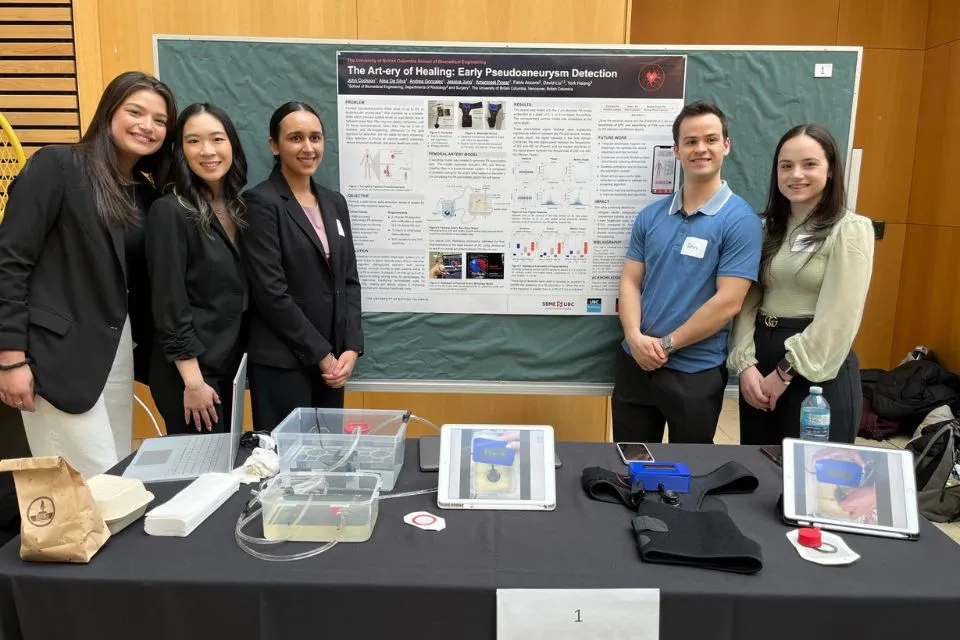Engineering is a mindset. It's about being a problem-solver, viewing the world through different perspectives, and innovating to find solutions that help others.

Amarpreet Powar
- Degree:
- Bachelor of Applied Science
- Grad year: 2023
- Program:
- Campus: Vancouver
I am graduating with a degree in Biomedical Engineering. I am a Wesbrook Scholar and an active member of the community, both on and off campus. Throughout my time at UBC, I’ve been a TA, participated in design teams, led projects in the Engineers Without Borders chapter at UBC, and completed research in a robotics and bioprocess engineering lab. Outside of school, I’ve volunteered at blood donation clinics, the Fraser Health Crisis Line, Kids Help Phone text line, and BC Children’s Hospital.
I am excited to be starting medical school at UBC this August. Throughout my biomedical engineering degree, I worked on problems relevant to healthcare, and this increased my interest in medicine and the role of physicians. I feel that a doctor with a biomedical engineering background can diagnose and treat patients, but also go one step further and use their experience to develop new therapeutics and treatments to improve people’s lives.
What has made your time at UBC memorable?
For me, the greatest feature of engineering at UBC is the sense of community that is built throughout your studies. Within your specific program, you and your peers take many of the same courses, so you spend a lot of time together and have the opportunity to build friendships. It is the people I’ve met in the biomedical engineering program who have made my time at UBC most memorable. From late nights spent working on projects to group study sessions, spending time with people you’ve known for years makes everything more enjoyable and manageable. I have made friendships that I know will last a lifetime.
My capstone project this year was especially memorable. Not only did I get to spend this project working with my friends, the project involved working with doctors and medical students to design an early detection device for femoral pseudoaneurysms. We were able to showcase our work during Design and Innovation Day, where we received an award for our project.
How do you feel your degree has benefitted you compared to a different field of study?
I know that biomedical engineering was the best field of study for me. My degree has equipped me with skills that I would not have learned in a traditional science program. For example, I learned engineering and technical skills such as coding, machine learning, CAD design, electronic circuit design, and more. I was also able to learn about the human body, stem cells, biochemistry, and therapeutic development. This combined knowledge is only offered in the biomedical engineering program. The versatile skill set I’ve gained in this program will prepare me for the future, as I have the engineering tools needed to problem-solve and innovate, as well as the knowledge needed to make a difference in healthcare.
How did your studies in the Faculty of Applied Science prepare you for the future of work?
As technology advances, we have to be prepared to adapt and use it to our advantage. The courses I’ve taken in my program have always emphasized the importance of keeping up to date with new advances in our field of study. Our classes are not just about the memorization of facts. Our courses have taught us how to conduct research, critically evaluate new information, and apply it in new ways. Knowledge is not stagnant, but ever-growing. Therefore, my degree has prepared me to be a life-long learner, and this means that I will be able to evolve with my field in the future.




